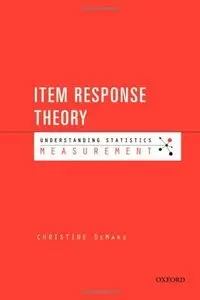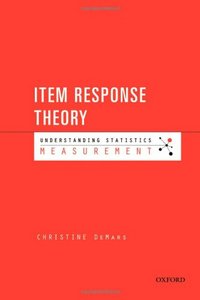Christine DeMars, "Item Response Theory (Understanding Statistics)"
English | 2010 | ISBN: 0195377036, 0199703841 | 144 pages | PDF | 3 MB
English | 2010 | ISBN: 0195377036, 0199703841 | 144 pages | PDF | 3 MB
This is a title in our Understanding Statistics series, which is designed to provide researchers with authoritative guides to understanding, presenting and critiquing analyses and associated inferences. Each volume in the series demonstrates how the relevant topic should be reported – including detail surrounding what can be said, and how it should be said, as well as drawing boundaries around what cannot appropriately be claimed or inferred.
This volume addresses an important issue for the design of survey instruments, which is rarely taught in graduate programs beyond those specifically for statisticians. Item Response Theory is used to describe the application of mathematical models to data from questionnaires and tests as a basis for measuring abilities, attitudes, or other variables. It is used for statistical analysis and development of assessments, often for high stakes tests such as the Graduate Record Examination. The author is known for her clear, accessible writing; like all books in this series, this volume includes examples of both good and bad write-ups for methods sections of journal articles.
Summary: IRT in your Pocket
Rating: 5
Do not let its small size make you underestimate the scope of this book. Although Demars' IRT can be considered to be an introductory book (and requires almost no math/stats background) it covers a variety of topics about Item Response Theory. As a result of a comprehensive survey of the related literature, the author provides nuggets of information about a wide rage of rules of thumb and analysis alternatives. But I must warn that due to its direct approach and a kind of fast pace, this book is not the best option if it will be your first encounter with IRT. On the other hand, you will get the most of it if you have some conceptual experience and planning to develop a IRT-based scale (or conduct an IRT Analysis) for the first time. It may sound weird but the biggest downside of the book is that it is an IRT book! That means the author does not subscribe to the Rasch Measurement Philosophy (Of course this will not be viewed as a flaw by many).



